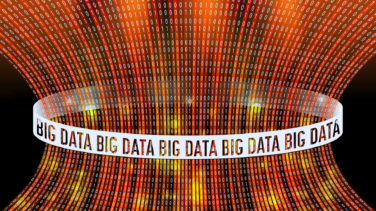The pharmaceutical marketing landscape is fast-moving and ever-evolving. New entrants come into a therapeutic class, often with increased efficacy or safety, while older products lose patent exclusivity, changing the promotional landscape. Plus, the ways healthcare providers (HCPs) interact with both patients and pharmaceutical companies have seen significant changes.
Long gone are the days when sales representatives sat in HCPs’ offices waiting for an opportunity to promote a product. Nowadays, many physician and patient interactions are virtual, and, even when they are face to face, physicians usually rely on an electronic medical records (EMR) system.
This ever-increasing use of computers presents both challenges and opportunities for agencies promoting within the pharmaceutical space. In addition to traditional online avenues such as social media and email, a substantial ecosystem of vendors can funnel promotional messaging directly to HCPs. Most of these interactions generate physician-level data (PLD), and it is imperative that agencies properly collect this data and use it to optimize their clients’ promotional spending.
Building a Data Warehouse
Today, agencies need to build and maintain a significant data infrastructure that automates the capturing and storing of the PLD generated from these different vendors. Gone are the days when CSV files are emailed back and forth—operating in this time-consuming fashion brings too much risk and cost.
However, infrastructure alone is not enough. Extensive procedures must also be implemented to ensure all PLD related to a campaign is captured in the data warehouse by choreographing a complicated dance between the account, media, and analytics teams.
Turning Data into Information
A well-functioning data warehouse is just the beginning of the journey. Data should be captured at the most fundamental and transactional levels for these aggregations of data to be used for advanced analytics. The burden then lies with the analytics group to facilitate access to the information contained within this data.
For media and account teams to get full utility from a data warehouse, they should have access to business intelligence (BI) tools that “pre-digest” data and provide concise insights regarding campaigns. These tools should provide the basic metrics that teams need to gauge the impact of their marketing efforts. Metrics such as target reach, engagement rates, and cost per conversion need to be quickly accessible, and aggregations by specialty, segment, time, and region should also be at their fingertips.
Many good BI tools can fill this role, including SAP business objects, Tableau, SAS business intelligence, and others. However, many factors go into an agency’s decision when choosing the right BI tool for them, and they must weigh their analytic priorities, since one size does not fit all. And at the end of the day, as long as their data warehouse is accessible via multiple tools, their infrastructure will achieve its overarching purpose of driving information throughout the company with enough flexibility to give their team members choices.
Turning Information into Insights
Reporting key performance indicators (KPIs), while necessary, is not sufficient to mine all the value contained in a data warehouse. The next leg of the journey involves deriving insights that help optimize promotional campaigns. The use of machine learning (ML) and artificial intelligence (AI) algorithms is proliferating through all data-driven industries, and the agency space is no different. Integration of this technology into business operations can be a daunting task, requiring a significant investment in time and money. Fortunately, a well-designed data infrastructure, particularly a data warehouse, can greatly facilitate this process.
As with BI tools, an agency can take a multitude of paths. A good place to start is with a simple question: What problem do I want to solve? Many companies approach this issue completely backward by beginning with a desire to integrate AI technology merely because competitors are doing it, or because they think it will better market their company’s services. AI for AI’s sake is an expensive luxury and many questions, such as its return on investment (ROI), can be answered with more traditional methodologies. However, some questions are natural fits for an AI/ML approach, such as: Which sequences and combinations of promotional channels are most effective for different target segments? or What is the best message (or next best action) to give a target right now?
The Takeaway? Statistics Are Significant
The importance of being able to explain, at least at a 10,000-foot view, how decisions are being made cannot be underestimated, and moving away from “black box” solutions is imperative. While some customers will always chase a shiny, new ball, an even bigger group needs to feel comfortable with the mechanisms allocating promotion across their campaigns.
That’s why if you choose a neural network, you need to be able to concisely explain how it works, how it’s trained, and what its strengths and weaknesses are. It is also important to make sure that your sales and account teams can effectively communicate your network’s operation with simplified examples that aren’t bogged down with buzzwords that will ultimately leave potential clients unsure and confused.
Pharmaceutical marketing has always relied heavily on data, especially since HCP-level insights have become available. As a result, today’s agencies have no choice but to embrace this brave new world—and, more recently, a well-thought-out data ecosystem that focuses first on data capture, then data reporting, and finally, the delivery of advanced analytic insights to clients to help put them on a path to success.










